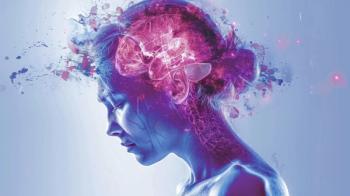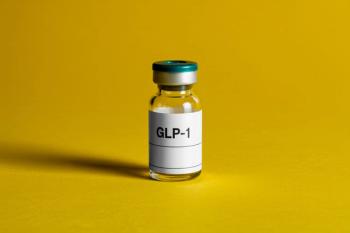
Depression With Anhedonia vs Dysthymia: Do We Understand the Difference?
Key Takeaways
- Anhedonia, a core symptom of depression, affects pleasure anticipation and experience, linked to dopamine dysfunction in the brain.
- Dysthymia, now persistent depressive disorder (PDD), involves chronic depressive symptoms, requiring distinct diagnostic criteria from major depressive disorder.
Diagnostic clarity between anhedonia and persistent depressive disorder is paramount in clinical practice to ensure effective and safe treatment for patients.
CLINICIAN’S CORNER
What Is Anhedonia?
Anhedonia is a term used to describe the inability to experience pleasure from activities that are usually found enjoyable, such as eating, exercising, social interactions, or hobbies. It is a core symptom of various mental health disorders, including depression, schizophrenia, and other mood disorders. Individuals with anhedonia may find it difficult to feel joy or satisfaction, which can significantly impact their quality of life and daily functioning. The DSM-5 diagnosis of depression requires the presence of at least 5 symptoms over a period of 2 weeks. At least 1 of these 5 symptoms must be either: (1) depressed mood or (2) a loss of interest and pleasure.1 While anhedonia is not explicitly named, it is captured as a core symptom of depression. Anhedonia is readily recognized by clinicians and its relevance has been reinforced by psychological theories of positive and negative effect,2 evolving neuroscience,3 and clinical outcomes.4
While the majority of anhedonia research involves depression, this multi-dimensional symptom plays an important role in many disorders including schizophrenia, addiction, and even neurologic disorders such as Parkinson disease.5,6 Anhedonia can be further delineated into anticipatory anhedonia, a reduced capacity to anticipate pleasurable activity, and consummatory anhedonia, a reduced experience of pleasure within activity participation.7 Individuals with anticipatory anhedonia may struggle to plan and initiate activities due to reduced motivation and interest (
The assessment of anhedonia is difficult as it is a subjective experience. Additionally, anhedonia is not a stable trait and severity may fluctuate, often worsening in an acute depressive episode. The presence of a long-term impairment of pleasure with a temporal component may be suggestive of dysthymia or substance use disorders.7 A common clinical assessment tool is the Snaith-Hamilton Pleasure Scale, a 14-item self-report questionnaire designed for use within
What Is Dysthymia?
Initially, dysthymia was categorized as a
The DSM-5 diagnosis of PPD requires the presence of a depressed mood for most of the day, for more days than not, over a period of at least 2 years, and there cannot be an absence of symptoms for more than 2 months at time. While the patient feels depressed there must also be at least 2 or more of the following: (1) poor appetite or overeating, (2) insomnia or hypersomnia, (3) low energy or fatigue, (4) low self-esteem, (5) poor concentration or difficulty making decisions, and (6) feelings of hopelessness.1 PDD may present with or without a dimension of anhedonia. There is not a common clinical assessment tool specifically for the newer diagnosis of PDD; however, the Cornell Dysthymia Rating Scale (CDRS) is a 20-item self or clinician rated scale that has been psychometrically tested and found to be valid in establishing the frequency and severity of dysthymia symptoms with higher scores indicating a greater severity of symptoms.13
The neurobiological research findings are similar to MDD with dysregulation of monoamines and sleep structure,14-15 decrease in brain derived neurotrophic factor, increase in inflammatory markers, and changes in brain volume as well as changes in the limbic system and prefrontal cortex.16-17 The temporal component most strongly differentiates PDD from MDD, but clinical similarities can make differentiating between PDD and MDD difficult. Differentials such as substance use and personality disorders must be ruled out; in addition, the clinician must recognize that substance use and personality disorders are often comorbid with PDD.1,12,15
Why Is This Important?
Diagnostic clarity between anhedonia and PDD (formerly dysthymia and chronic MDD) is paramount in clinical practice to ensure effective and safe treatment for patients. While psychiatry is progressively embracing a dimensional approach to understanding mental health disorders, categorical diagnoses remain essential as they encapsulate specific symptom clusters that guide evidence-based therapeutic interventions. Anhedonia (a multi-dimensional core symptom), characterized by a loss of interest or pleasure in most activities (Table 2), and PDD (a specific syndrome or cluster of symptoms) a persistent low mood, though related, necessitate distinct treatment strategies. Utilizing the wrong diagnostic category can be likened to fitting a car with inappropriate tires; while the vehicle might still function, it is unlikely to perform optimally and may even incur damage over time. Just as the right tires are crucial for a car's performance and safety, accurate psychiatric diagnoses are vital for tailoring effective treatment plans that optimize patient outcomes and prevent potential harm.
Dedicated to early career clinicians, Clinician’s Corner aims to provide helpful information in an approachable and supportive manner. If you have topics that you would like Drs Asbach and Roque to discuss, please submit suggestions to
Ms Roque is a clinical associate professor in the Hahn School of Nursing and Health Science at the University of San Diego. Mr Asbach is a psychiatric physician associate and serves as associate director of interventional psychiatry at DENT Neurologic Institute in New York.
References
1. American Psychiatric Association. Diagnostic and Statistical Manual of Mental Disorders. 5th ed.American Psychiatric Association; 2013.
2. Watson D, Tellegen A.
3. Rømer Thomsen K, Whybrow PC, Kringelbach ML.
4. Uher R, Perlis RH, Henigsberg N, et al.
5. Hatzigiakoumis DS, Martinotti G, Giannantonio MD, Janiri L.
6. Gandhi A, Mote J, Fulford D.
7. Serretti A.
8. de la Fuente-Fernández R, Phillips AG, Zamburlini M, et al.
9. Baldo BA.
10. Snaith RP, Hamilton M, Morley S, et al.
11. American Psychiatric Association. Diagnostic and Statistical Manual of Mental Disorders (2nd ed). American Psychiatric Association Publishing;1968.
12. American Psychiatric Association. Depressive Disorders. In: Diagnostic and Statistical Manual of Mental Disorders. (5th ed., text rev) (pp,194-197). American Psychiatric Association; 2022.
13. Hellerstein D, Batchelder S, Lee A, Borisovskaya M.
14. Murphy MJ, Peterson MJ.
15. Klein DN, Schatzberg AF, McCullough JP, et al.
16. Howland RH, Thase ME.
17. Kupfer DJ, Frank E, Phillips ML.
Newsletter
Receive trusted psychiatric news, expert analysis, and clinical insights — subscribe today to support your practice and your patients.














